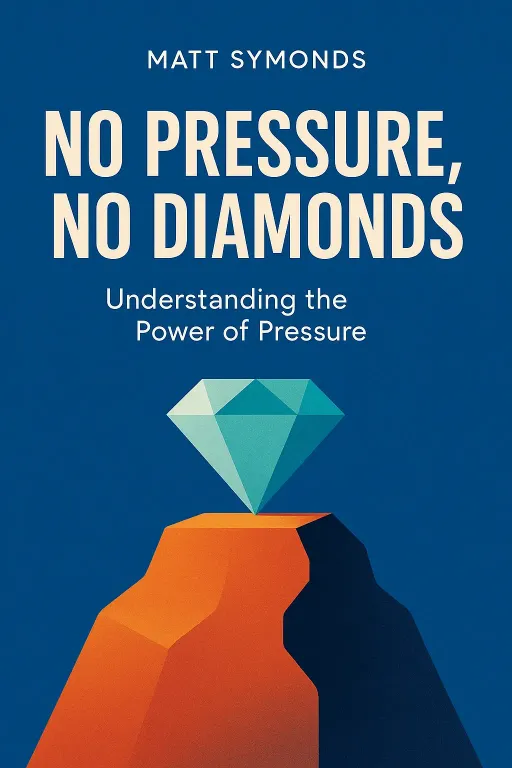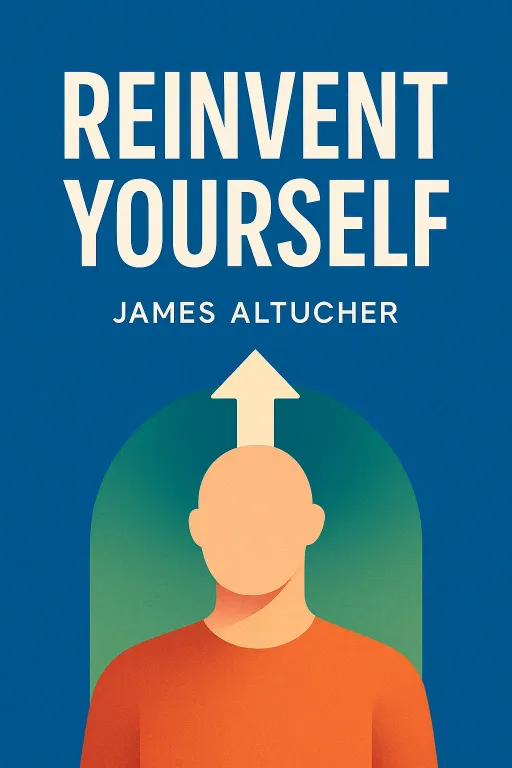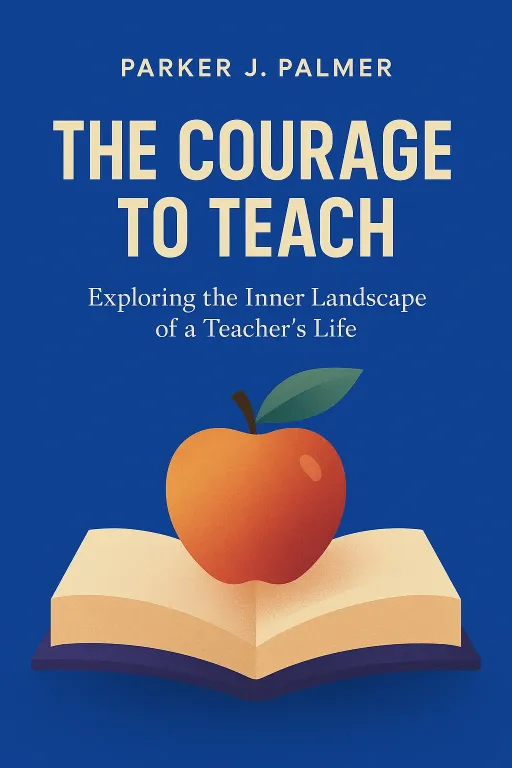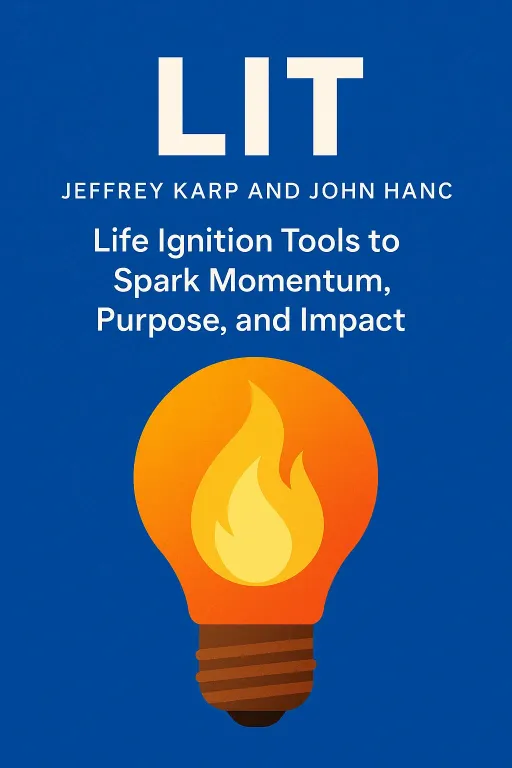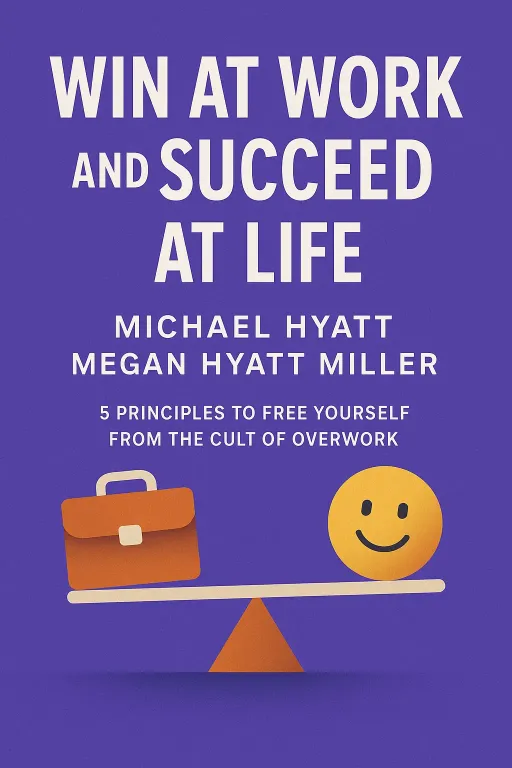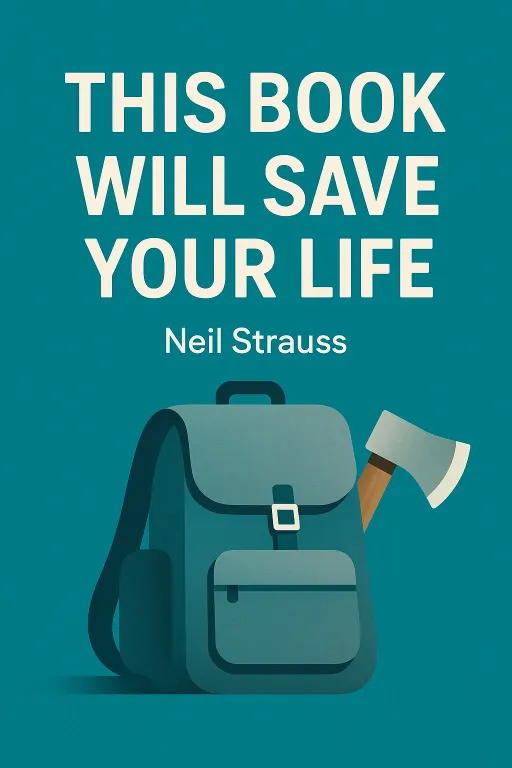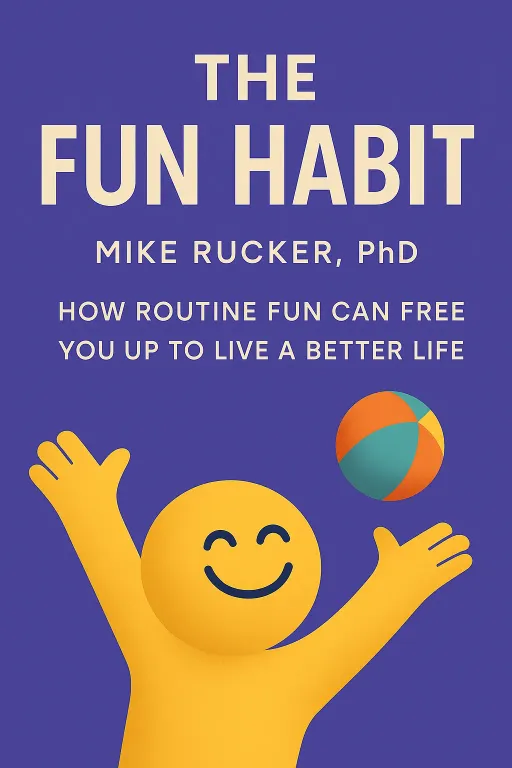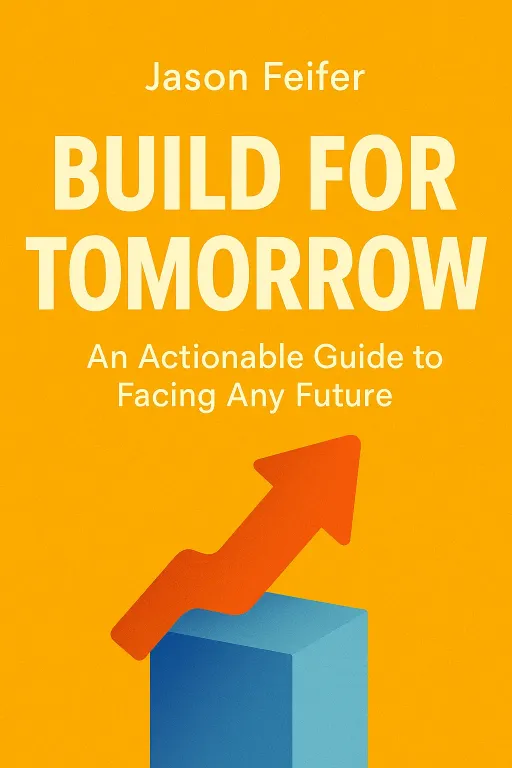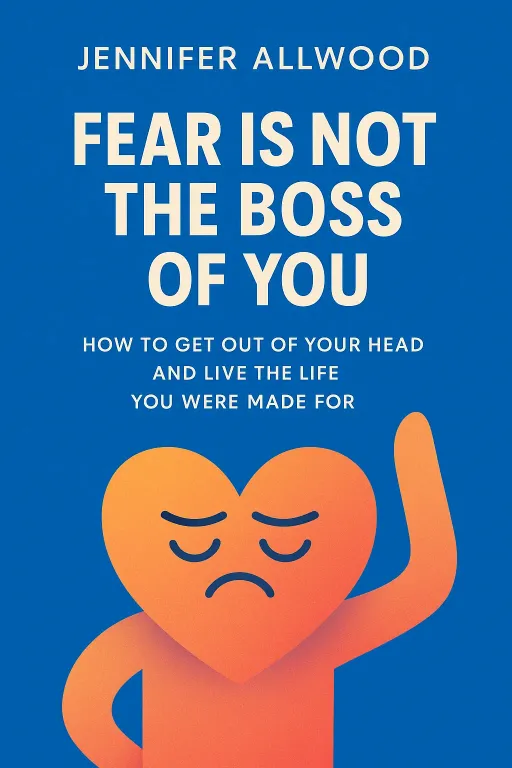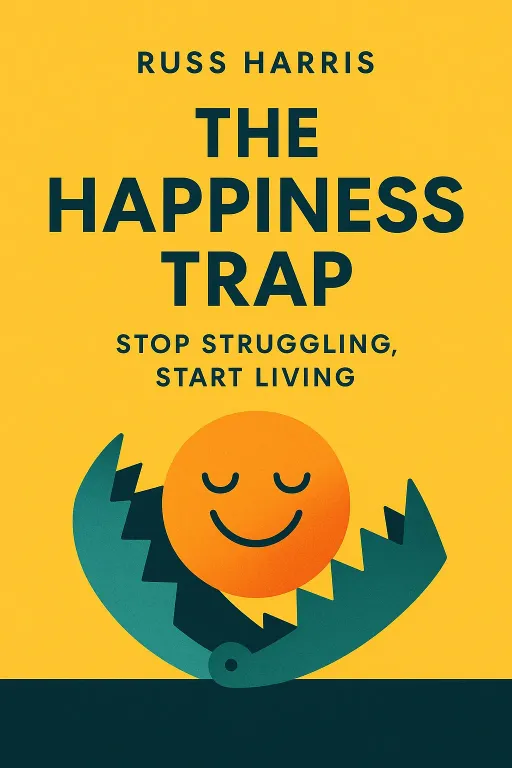
The Resilient Commander: Escaping the Happiness Trap for Peak Performance
11 minGolden Hook & Introduction
SECTION
Albert Einstein: Hang, as a leader in the tech world, you're constantly managing complex projects, tight deadlines, and high expectations. But what if I told you that the most challenging project isn't on your Gantt chart, but right between your ears? And what if the very strategies we use to succeed out there—control, problem-solving, and relentless forward motion—are the very things that trap us in a cycle of stress and anxiety in here?
Hang Yin: That’s a fascinating and, honestly, a very familiar paradox, Albert. In technology, we're trained to debug systems, to find the root cause of a problem and eliminate it. We apply that same logic to ourselves. If I feel anxious, my instinct is to find the 'bug' in my thinking and fix it. The idea that this very 'fixing' instinct could be the problem is... well, it's deeply counter-intuitive, but it rings true.
Albert Einstein: Exactly! And that is the provocative idea at the heart of Russ Harris's "The Happiness Trap." He argues that our culture's obsession with being happy is, ironically, making us miserable. Today we'll deconstruct this from two powerful angles. First, we'll expose 'The Happiness Trap' itself and the illusion of control that keeps so many of us stuck.
Hang Yin: And then, I hope, you'll give us the escape plan.
Albert Einstein: Precisely. Then, we’ll reveal the antidote: the liberating power of what the book calls 'cognitive defusion' and how to access your 'observing self.' It's a manual for building psychological flexibility, which I think is one of the most critical, yet underrated, skills for any modern leader.
Deep Dive into Core Topic 1: The Happiness Trap and The Illusion of Control
SECTION
Albert Einstein: So let's start with the trap itself. The book uses a beautiful, if slightly tragic, metaphor. It says trying to hold onto happiness is like capturing a magnificent butterfly and pinning it to a table to admire it. The very act of trying to possess and control it, kills it. Hang, does that resonate with the pressure to maintain a 'winning' or 'positive' mindset in a corporate environment?
Hang Yin: It resonates completely. There’s this implicit expectation that leaders should be unflappable, optimistic, and always projecting confidence. But that pressure to perform happiness is exhausting. It leads to what the book calls 'experiential avoidance.' In my world, that translates to avoiding the tough-but-necessary feedback session because you fear the emotional discomfort, or delaying a decision on a risky but innovative project because you want to avoid the anxiety of uncertainty. You're trying to pin down the 'feeling of safety,' and in doing so, you kill innovation and genuine connection.
Albert Einstein: You've just perfectly described what the book calls a 'vicious cycle.' The supposed solution becomes the problem. Harris tells the story of a man named Joseph, who has a deep fear of rejection. It's a simple, clear case. Joseph feels anxious in social situations. So, his 'solution' is to avoid them. He turns down party invitations, he doesn't ask people out. But what happens?
Hang Yin: He becomes more isolated.
Albert Einstein: Exactly. He stays home, feeling lonely, which only reinforces his core belief that he is, in fact, being rejected. His avoidance of anxiety makes him more anxious and more lonely. The cycle feeds itself.
Hang Yin: That's a classic negative feedback loop. Anxious about a project's risk, a manager avoids a difficult stakeholder meeting. The lack of communication and alignment then the project's risk, which in turn amplifies the manager's original anxiety. The attempt to control the feeling of riskiness ends up creating more actual risk. It's a death spiral, psychologically speaking.
Albert Einstein: A death spiral! I love that. It's the perfect term. And it's all powered by this illusion that we be able to control our inner world. Let's try a little thought experiment from the book. It's very simple. For the next ten seconds, Hang, I want you to try your absolute hardest to think about delicious, cold, creamy vanilla ice cream. Don't think about its texture, its sweetness, or how it feels on a hot day. Go.
Hang Yin: ... Well, of course, all I can see is a giant scoop of vanilla ice cream.
Albert Einstein: Of course! The very act of trying to think about something makes it the star of the show. This is what the book calls the illusion of control. We are masters of controlling our external world—we build bridges, we write code, we manage projects. So we assume we can apply the same 'find and fix' logic to our thoughts and feelings. But the mind, it seems, doesn't work like that. The more you fight a thought, the more it fights back.
Hang Yin: So the problem isn't the negative thought itself, but the struggle the thought. The meta-work we do to try and suppress it is what drains our energy and focus, not the initial thought. That's a huge insight.
Deep Dive into Core Topic 2: The Liberating Power of Defusion and the Observing Self
SECTION
Albert Einstein: It is! And that leads us directly to the antidote. If we can't control our thoughts, if we can't just 'get over it,' what do we do? This is where the book offers a brilliant alternative. It's not about changing the thought, but changing your to it. This is a skill called 'cognitive defusion.'
Hang Yin: Defusion. As in, the opposite of being fused with the thought?
Albert Einstein: Precisely. Let me give you another quick example from the book. Just read this word: L-E-M-O-N. What happens in your mouth?
Hang Yin: Hmm. A slight puckering, maybe a little bit of salivation.
Albert Einstein: Right! Your body reacted to a string of letters on a page as if it were a real lemon. That's cognitive. We are so fused with language that we react to our thoughts as if they are reality. The thought 'I'm going to fail this presentation' triggers the same fear response as if we were failing it in that moment.
Hang Yin: Okay, I see the mechanism. So how does defusion break that link?
Albert Einstein: With a surprisingly simple technique. The book suggests that the next time you have a sticky, unhelpful thought, you simply preface it with the phrase, "I'm having the thought that..." So, instead of getting lost in the thought, "I'm a failure," you step back and observe, "I'm having the thought that I'm a failure."
Hang Yin: That's a reframing technique. It's subtle but powerful. It shifts the statement from one of identity—'I a failure'—to an observation of a transient mental process. In project management terms, it's like moving a bug report from 'Critical System Failure' to 'Logged Issue: User reports feeling of failure.' You acknowledge it, you see it, but it doesn't shut down the whole system. You can still function.
Albert Einstein: You can still function! That is the entire goal. It's not to feel good, it's to be effective. And this ability to observe your thoughts comes from what the book calls the 'observing self.' It uses this wonderful, ancient metaphor: You are not the weather, you are the sky.
Hang Yin: The sky and the weather...
Albert Einstein: Yes. Your thoughts, feelings, memories, sensations—they are the weather. Constantly changing. Storms, sunshine, clouds, wind. They come and they go. But you, your core consciousness, the 'observing self,' you are the sky. The sky is the space in which all the weather happens. A hurricane doesn't damage the sky. The clouds don't stain the sky. The sky is always there, vast and untouched, simply allowing the weather to pass through.
Hang Yin: That's a profound shift in perspective. As a leader, you're so often in the middle of the 'weather'—market shifts, team conflicts, a sudden crisis. You feel like you the storm. The ability to access that 'sky' perspective, to connect with that observing self, would be the ultimate tool for maintaining composure and making strategic, not reactive, decisions. It’s the foundation of resilience.
Albert Einstein: It is the very definition of resilience. You're not trying to stop the rain, you're just remembering that you are the sky, and you have space for it.
Synthesis & Takeaways
SECTION
Albert Einstein: So, when we put it all together, the journey proposed in "The Happiness Trap" isn't about finding some mythical land of permanent happiness. It's about learning to navigate the inevitable weather of our own minds with skill, grace, and purpose.
Hang Yin: I think that's right. It's about shifting from being a of our internal state to being an of it. And that simple shift is what frees us up to take action on the things that truly matter, regardless of the internal noise. For anyone in a leadership or creative role, where self-doubt and pressure are constant companions, this isn't just self-help; it's a performance strategy.
Albert Einstein: A performance strategy. I like that. So, for our listeners, here is a simple, powerful action from the book you can try today. The next time you feel overwhelmed, stressed, or hooked by a difficult thought, try the technique.
Hang Yin: And what does that involve?
Albert Einstein: It's simple. You just pause and take ten slow, deep breaths. And as you do, the key is this: don't try to stop your thoughts or push away your feelings. Just notice them. Acknowledge them like cars passing on a street. 'Ah, there's the thought about the deadline.' 'There's that feeling of anxiety in my chest.' And with each breath, gently bring your focus back to the physical sensation of the air moving in and out of your body.
Hang Yin: It's a one-minute reset button. A way to disengage from the 'thinking self' and reconnect with the 'observing self.'
Albert Einstein: Exactly. It's a small step, but as the book reminds us, a journey of a thousand miles begins with one.
Hang Yin: It's a practical tool for any leader, innovator, or anyone trying to do hard things. It’s not about eliminating the storm, but about learning to be the calm in the center of it. And from that calm place, you can choose your next move wisely.
